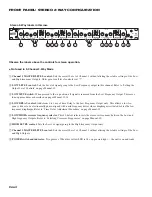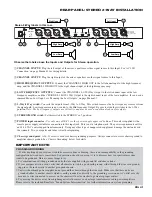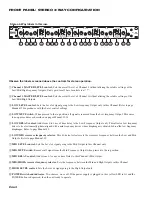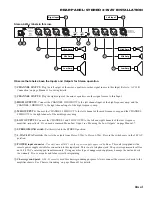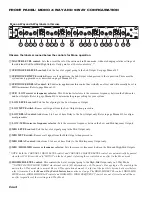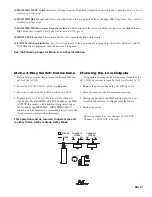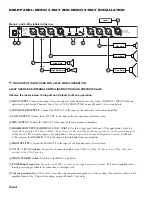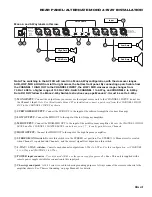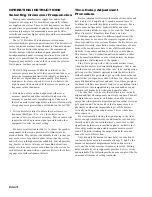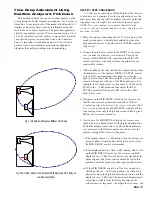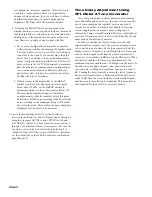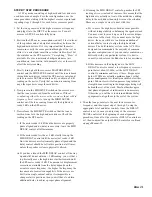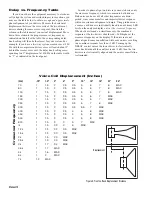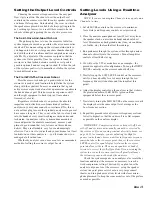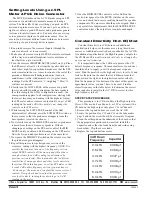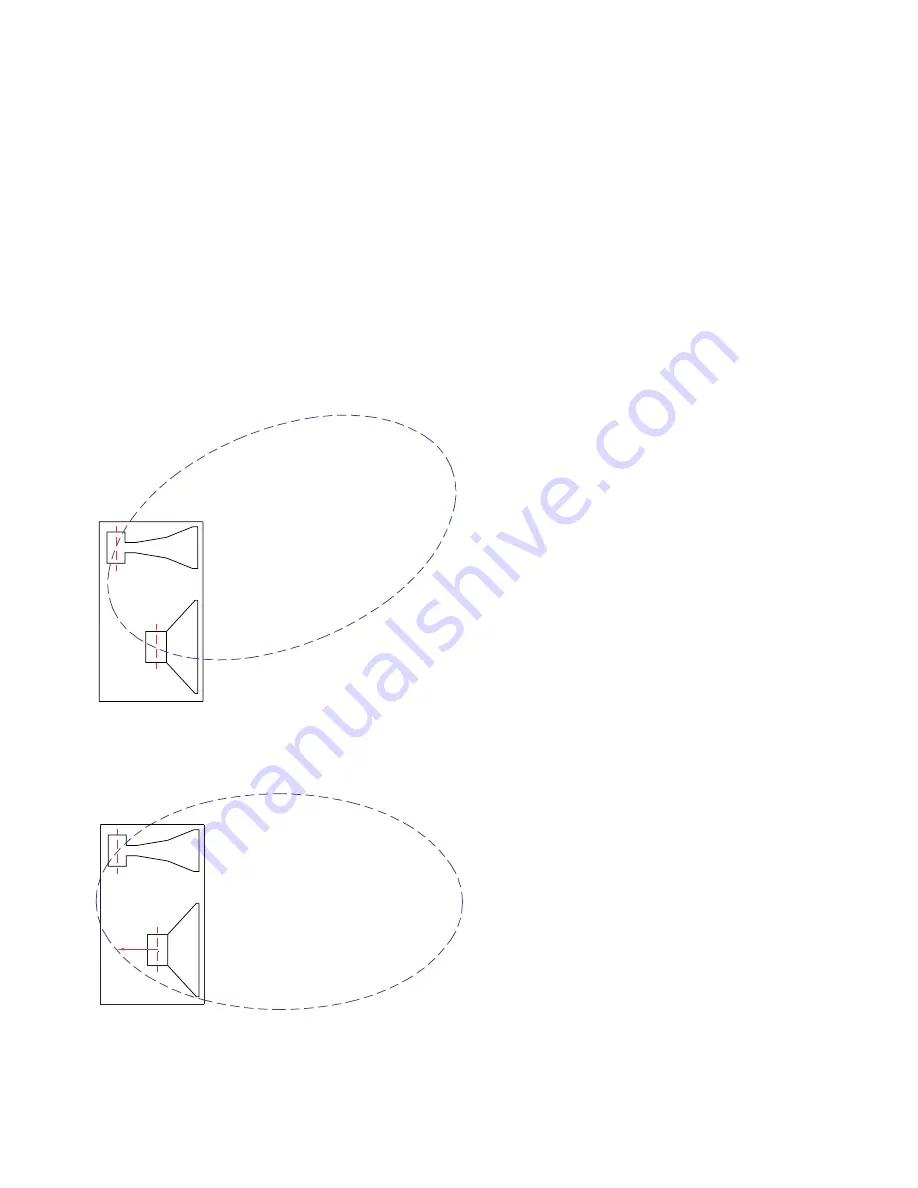
Manual-11
Fig. 1 In-Phase Axis Response Without Time Delay
Fig. 2 Corrected In-Phase Axis Response With Electronic Time Delay on
Low Frequency Driver
Time Delay Adjustment Using
Realtime Analyzer & Pink Noise
This method outlines the use of a realtime analyzer, pink
noise generator and flat response microphone to set crossover
time delay. Some references will be made to the Rane RA 30
realtime analyzer for those with the intelligence and good
taste to use one of these regularly. The procedure applies to
virtually any analyzer system. We recommend using a 1/3 or
2/3 octave analyzer as either of these is more likely to match
your specific crossover points than a one-octave analyzer.
And it
is
important to match the analyzer to the crossover
point as closely as possible for proper phase alignment,
otherwise the analyzer readings may be misleading.
STEP BY STEP PROCEDURE
A 3-Way mode consisting of High, Mid and Low drivers
is used here as an example. For other configurations, use the
same procedure starting with the highest crossover point and
repeating steps 2 through 5 for each lower crossover point.
NOTE: If you are running two separate channels on the
crossover, tune up only
one
channel at a time, using the same
procedure for both.
1. Place the analyzer microphone about 15 feet in front of the
speaker stack and at a height about midway between the
high and mid drivers. Turn all crossover LEVEL controls
fully down.
2. Connect the pink noise source to the INPUT of the cross-
over (or mixer or wherever is convenient). Turn up the
crossover MASTER LEVEL control and the MID OUT
control until noise is heard
only
from the mid driver at a
comfortable volume.
3. With a healthy but not uncomfortable volume of noise from
the mid driver, set the analyzer DISPLAY LEVEL control
so the LED’s corresponding to the high crossover fre-
quency are reading 0 dB (this would be a green LED at the
crossover frequency with any of the Rane analyzers). For
example, if your high crossover frequency is 2 kHz, set the
RA 30 in the ±1 dB mode and then adjust the RTA
LEVEL control until the green LED is lit in the 2 kHz
band. There...easy.
4. Now press in the MID MUTE switch on the crossover so
that the tone is removed from the mid driver.
Without
re-adjusting either the meter or the crossover Input or Mid
Level controls,
turn up the HIGH LEVEL control until the
tone coming from only the high driver reads 0 dB (a green
LED at the crossover frequency).
5. Now release the MID MUTE switch on the crossover so
that pink noise is heard from
both
the high and mid drivers.
Switch the display sensitivity to ±3 dB on Rane analyzers
(not necessary with full scale analyzers) and observe the
display reading at the crossover frequency:
i. If the display shows a +3 dB reading, then the drivers are
properly phase aligned and no delay is necessary; leave
the MID DELAY control at minimum.
ii. If the display shows
less
than +3 dB reading, slowly turn
up the MID DELAY control on the crossover until the
display shows +3 dB. Now the drivers are electronically
phase aligned. The Delay control should be left in this
position unless the speaker system is physically altered.
iii. If the MID DELAY control is all the way up and you
still do not have a +3 dB (red) reading, you will have to
physically move the high driver farther
forward
until the
display shows +3 dB (red). The amount of displacement
correction available from the Delay depends on the
actual crossover frequency: the higher the frequency, the


